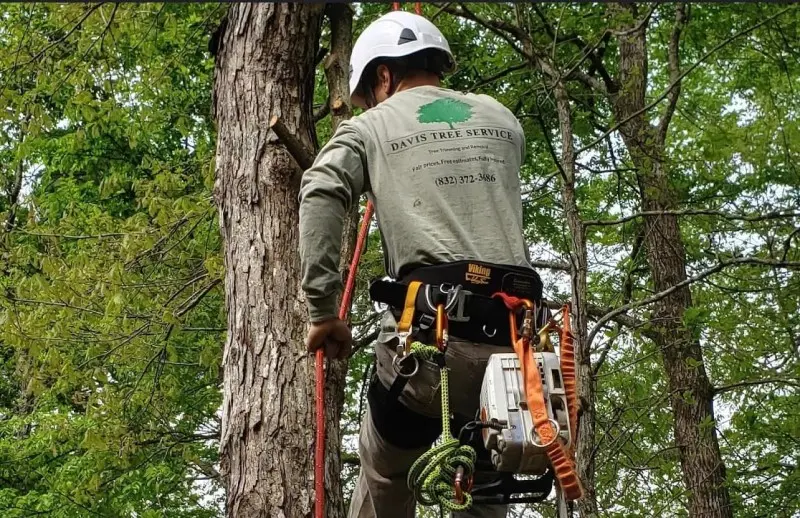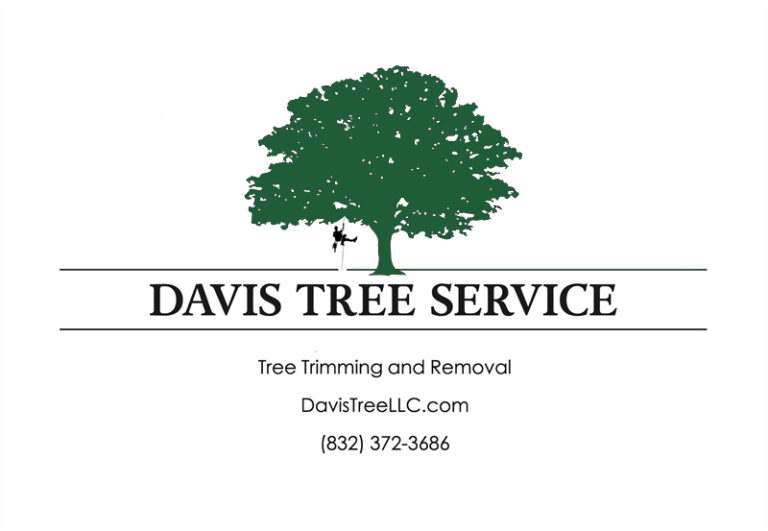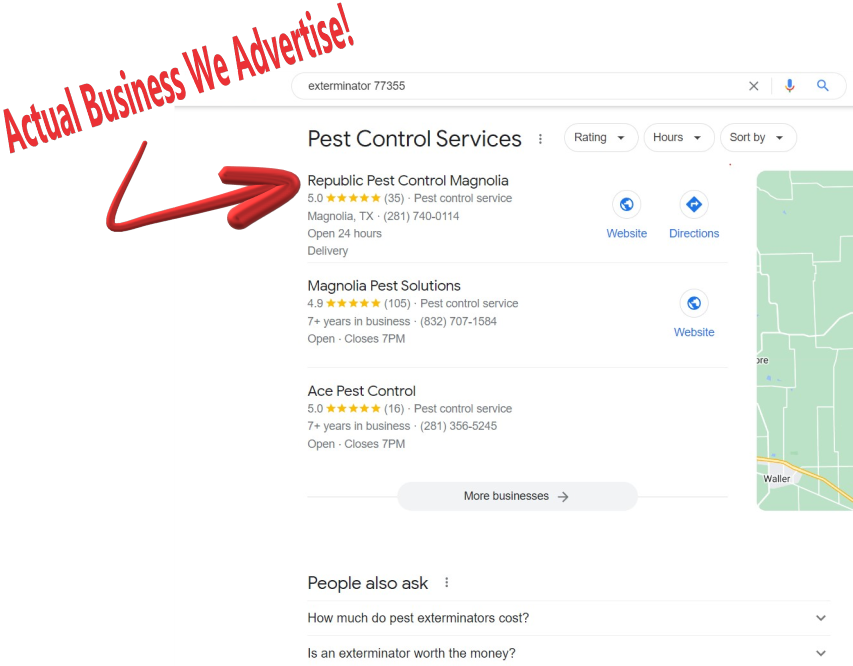I’m Ryan, the owner of Davis Tree Service, and if you’ve got trees in Magnolia, you’ve got work to do. Trees don’t trim themselves, and letting them grow wild causes problems—some you can see, and some you can’t until it’s too late. That’s why we’re out here every day, helping homeowners and property managers keep their trees healthy, clean, and shaped the way they’re supposed to grow.
Visit our website to see what we do.
Tree Trimming Is Routine, Not Cosmetic
Trimming isn’t something you do when the tree looks messy. You do it when limbs are starting to crowd the house, when sunlight can’t reach your lawn, when deadwood is building up inside the canopy, or when branches lean too close to the roof.
We trim to:
- Shape young trees for long-term health
- Thin canopies to reduce wind resistance
- Cut back overgrowth around structures
- Remove low-hanging limbs near driveways
- Prevent disease from spreading through dead branches
We don’t do guesswork. We don’t leave stubs. And we don’t gut the middle of a tree like you’ll see some crews do when they’re rushing.
Get in touch to schedule your trim
The Magnolia Climate Plays a Role
Trees in Magnolia grow fast. The humidity, rainfall, and mild winters mean oaks, pines, crepe myrtles, and pecans can put on growth quickly—and unevenly. That’s where trimming comes in.
Unchecked growth can cause:
- Structural imbalance
- Crowding of other trees
- Fungus and insect risk from trapped moisture
- Storm damage from heavy, unsupported limbs
We know what to cut, when to cut, and how far to go without weakening the tree.
What Tree Trimming Looks Like on a Typical Job
Here’s how most residential trimming jobs play out:
- Walk-through – We walk the property with you and talk through goals: safety, shade, growth, etc.
- Plan the cuts – We mark limbs for removal or reduction.
- Drop and lower – Large limbs get tied, cut, and lowered to avoid property damage.
- Clean up – All debris is hauled off unless you request mulch.
- Final check – We go over the results and answer any questions.
We’re not pulling up, chopping fast, and leaving a mess. Every job has a method.
Chart: Common Tree Types in Magnolia and How We Trim Them
| Tree Type | Common Issues | Our Trimming Approach |
|---|---|---|
| Live Oak | Thick canopy, low-hanging limbs | Raise crown, thin interior, remove deadwood |
| Pine | Tall growth, storm risk | Remove lower limbs, evaluate split leaders |
| Crepe Myrtle | Over-pruned or choked base | Selective thinning, no topping |
| Pecan | Large, heavy limbs | Deadwood removal, balanced shaping |
| Cedar Elm | Fast lateral growth | Reduce weight on ends, thin for airflow |
What We Don’t Do
We don’t “top” trees. Topping—a practice where the top of the tree is chopped off—is one of the worst things you can do to a tree’s health. It weakens the structure, encourages rot, and makes it more dangerous in storms.
We don’t leave climbing spikes in live trees. If you see a trimmer walking up your tree with spikes on his boots, stop them. That damages the cambium and opens the tree up to disease.
And we don’t rush. Tree trimming is about safety and longevity, not just looks.
Why Local Trimming Makes a Difference
Magnolia has specific needs when it comes to trees. The soil is sandy in spots and clay-heavy in others. The wind shifts hard in spring and fall. And the storms—when they come—can take down entire trees if the canopy is too thick or unbalanced.
We’ve trimmed in this town for years. We know how the trees behave, what causes them to split, and how to keep your yard from becoming a liability.
Check out our gallery for examples
Who Calls Us for Tree Trimming?
We serve:
- Homeowners with large shade trees
- HOAs and subdivisions
- Commercial buildings and offices
- Pasture and rural properties
- Schools and public lots
Some clients call once a year. Others call every season to manage growth. We’re flexible with one-time jobs or regular visits.
How Often Should Trees Be Trimmed?
There’s no set calendar, but here’s a rough guideline based on what we see in Magnolia:
- Oaks – Every 2–3 years
- Pines – Every 2–4 years (mostly lower limb removal)
- Crepe Myrtles – Annually, but selectively
- Fruit Trees – Annually to maintain shape and production
- Maples / Elms – Every 2–3 years
Waiting too long causes overgrowth. Trimming too often stresses the tree. We find the balance and stick to it.
Cleanups, Storm Response, and Trimming for Safety
Sometimes, trimming isn’t just about shaping. After a storm, we remove broken branches, hanging limbs, or debris caught in power lines and rooftops. We also trim around:
- Power lines
- Roofs and gutters
- Driveways and sidewalks
- Air conditioning units
- Fences and pool enclosures
Trimming before hurricane season is a smart move. We’ll prep your trees and reduce wind resistance to lower your chances of major damage.
What It Costs and How We Price It
Every trimming job is different. We look at:
- Tree size and species
- Accessibility (over roof, pool, etc.)
- Amount of material to remove
- Haul-away requirements
- Crew size needed
You’ll get a clear quote upfront. No add-ons. No clock watching. Just the job, done right.
What Clients Say
“Davis Tree took down two massive limbs over our roof and didn’t leave a scratch behind. Great cleanup too.”
— Melissa B., West Magnolia
“They shaped our oaks beautifully and opened up our yard. Looks and feels totally different now.”
— John S., Lake Windcrest
“No pressure sales, just good work and honest pricing. They know what they’re doing.”
— Craig W., Magnolia Proper
We’re Not a Big Company — And That’s the Point
We’re local. We live in Magnolia. When you call, you talk to me, not a phone tree or sales team. Our crew is small, trained, and careful. We don’t take 10 jobs a day—we take the ones we can do right.
Ready to Trim Your Trees?
Let us know what you need. We’ll take a look, give you a clear plan, and get to work. Whether you’ve got one tree or twenty, we’ll trim it like it’s in our own yard.
📍 Based in Magnolia, TX
📞 Call or contact us here
🧰 Serving homes, farms, and businesses across Montgomery County








































